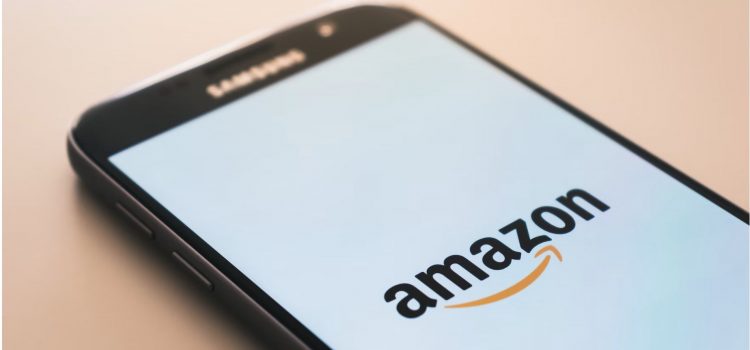
What’s the brief history of Amazon? Where did Bezos come up with the idea of Amazon?
Bezos’s story is the story of Amazon, the business he founded in 1994. Though Bezos doesn’t take all of the credit for the company’s success, it was he who shouldered the risk of creating an online retail store in a decade.
Let’s break down Amazon’s history, from its beginnings in a garage to hurdling through the Covid-19 pandemic.
The Rise of Amazon
Pulling from Invent and Wander by Jeff Bezos, we’ll trace the brief history of Amazon from Bezos’s childhood to the company’s modest early days in Seattle. These reports chart Amazon’s survival through the internet bubble and the Great Recession, as well as the company’s rapid expansion as it added an increasing number of services, both for its customers and its business partners.
Meet Jeff Bezos
The future multibillionaire Amazon founder was born on January 12, 1964, while his 17-year-old mother was still attending high school. Bezos’s path to wealth and recognition was fraught with financial risk, and quantifiable success would be a long time coming. Bezos and Isaacson trace Bezos’s early family influences, his childhood interest in science and computers, and his fateful decisions during college and after that altered the path of his future.
Bezos’s mother, Jacklyn Gise, became pregnant with him while still in high school. She was only allowed to graduate because Bezos’s grandfather fought for her right to attend, but her success was due to her resilience, which Isaacson says she passed on to her child. At college, Jacklyn met and later married a Cuban immigrant named Miguel Bezos, who adopted Jeff as his son. By the age of 10, Jeff Bezos was already tinkering with computers and the rudimentary internet of the 1970s, an interest that his mother encouraged. During summers at his grandparents’ ranch, Bezos learned values of perseverance and resourcefulness—as when his grandfather went out of his way to fix things on his own rather than paying someone else.
Amazon Is Born
Bezos praises American culture for encouraging and supporting entrepreneurs like himself, but that didn’t make starting his business any less of a risk. For most of the first decade of its existence, Amazon stood on shaky financial ground, and it survived by putting its focus on the customer experience and experimenting with new services and products. In Bezos’s annual shareholder letters, he covers Amazon’s genesis, how it expanded its business model and user base, as well as how it weathered the dot-com crash at the turn of the century.
Bezos developed Amazon’s original business plan not to be a rigid blueprint but to let himself think through his company’s potential problems. Bezos says he selected books as the first product to sell because an online bookstore could offer a wider selection than any physical retailer. With an initial investment from his parents’ life savings, Bezos moved to Seattle—not only because it was a computing industry hotbed, but for its proximity to the country’s biggest book wholesaler.
Like so many other new technology entrepreneurs in the ’80s and ’90s, Bezos started his business from his garage. Amazon’s website went online on July 16, 1995, offering access to nearly every book in print. Even without advertisement, orders started pouring in from all over the world.
Bust and Boom
But all was not well in the online business world. During the downturn that was to come, Amazon survived because of its mission to constantly build on its relationship with customers. While acknowledging that the internet bubble was hard on Amazon’s investors in the short term, Bezos explains the positive signs in Amazon’s actual financial numbers, how the company’s business model was better poised for success than those of other online stores, and how pioneering in whole new markets opened up Amazon for even greater successes.
Isaacson recounts that 1999 marked the beginning of what would be known as the “dot-com crash,” when most of the internet startups of the ’90s proved to be unprofitable and went out of business.
Amazon shares dropped from $106 in 1999 to $6 in 2001, and though industry experts predicted Amazon’s collapse, Bezos kept his eyes on its actual value, measured by customers, sales, and cash flow. He reassured investors that Amazon was sound by showing that financially it was performing better than ever. Although Amazon consistently lost money during the years it spent ramping up, it ended 2000 with $1 billion in cash and a record-high score on the American Customer Satisfaction Index.
Forging Ahead
The next economic hurdle Amazon faced was the Great Recession of 2008. During this downturn and the decade after, Amazon held its course and continued to grow. Bezos highlights three of Amazon’s business innovations that blossomed into permanent, successful programs that have shaped Amazon’s character in the 21st century—Marketplace, Prime, and Amazon Web Services—while explaining how Amazon faced the Covid crisis and continues to flourish in the shifting online economy.
Business Innovations
Launched in 2000, Amazon Marketplace grew out of attempts to host third-party vendors on Amazon’s platform. In its early years, Amazon partnered with other sellers so customers could access goods that Amazon itself didn’t keep in stock. After trying business models that separated outside vendors’ products from Amazon’s offerings, Amazon Marketplace placed third-party merchandise side-by-side with Amazon’s products. Rather than diminishing Amazon’s profits, Bezos argues that Marketplace is a win for all participants. It encourages healthy competition that results in better deals for customers while allowing Amazon’s partners access to a global distribution network that they never could have built themselves.
Another risky venture was Amazon Prime, a customer loyalty program that coupled discounts with free shipping on most items. From its conception in 2005, the initial financial projections for Prime suggested it might be a financial boondoggle, and Bezos admits that Prime was risky because if it failed, it would be hard to roll back without incurring customer resentment. Instead, Prime was a smashing success. It turned out that customers were eager to pay an annual premium for the convenience it offered, as well as its added perks such as rapid delivery and streaming video. For many users, Prime made ordering online preferable to shopping in stores.
Amazon’s third major innovation is completely separate from its retail identity. Initiated in 2006, Amazon Web Services (AWS) provides on-demand cloud computing tools that businesses can access on a pay-per-use basis. Bezos explains that AWS grew out of Amazon’s attempts to solve its own computing problems. Once the company’s software team designed the digital tools they needed, they realized that other companies would need them as well. The first AWS customers were small business start-ups that couldn’t afford their own IT departments, but soon, even large corporations turned to AWS to save costs. Though AWS started as a sort of side hustle, it now represents a significant pillar of Amazon’s standing as an economic giant.
Crisis and Competition
In 2020, the Covid pandemic drove home how important Amazon is to its customers. Online retail let people order basic necessities without risking exposure from in-person shopping. However, Bezos says that unlike the normal increase in business that comes with holiday shopping, the surge of online ordering during the Covid lockdown caught Amazon off guard. The company hired almost 200,000 new workers prioritizing delivery of essential goods. Amazon’s Marketplace worked to clamp down on third-party vendors engaged in price gouging, while AWS provided cloud computing to government agencies, medical researchers, and emergency call centers, as well as schools and businesses that had to rapidly switch to online work.
While Amazon took the lead in online retail, its success didn’t crush its competition—instead, Amazon changed the nature of retail and created new markets for other businesses to pursue. Major competitors like Walmart have now moved into online retail while offering services that Amazon can’t, such as curbside order pickup. By normalizing at-home delivery, Amazon created an avenue for companies such as Instacart that let grocery stores become online vendors. Bezos insists that he isn’t dismayed by the increasingly crowded online marketplace because he doesn’t believe that the competition detracts from Amazon’s value. Rather, the online retail market is still growing, as is Amazon’s overall share.

———End of Preview———
Like what you just read? Read the rest of the world's best book summary and analysis of Jeff Bezos's "Invent and Wander" at Shortform.
Here's what you'll find in our full Invent and Wander summary:
- A compilation of Jeff Bezos’s letters to Amazon shareholders, interviews, and speeches
- How Amazon rose from a niche retailer to a digital superstore
- Bezos’s values and insights into innovation and success






